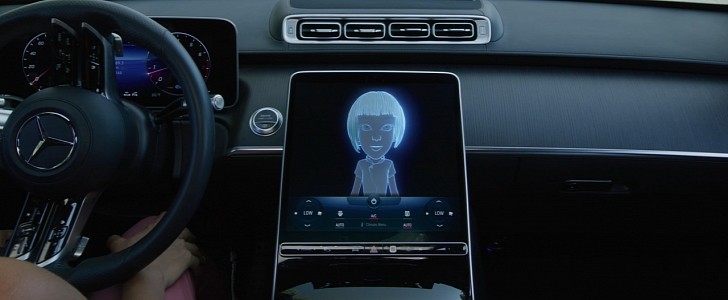Nvidia, the company mostly known for its powerful graphics cards for PC gaming, has recently re-affirmed its place in today’s automotive industry by way of AI-powered vehicles running on its technology.
In its latest video, the company presented a Mercedes S 500 model equipped with the NVIDIA DRIVE system. Much like Tesla's FSD, it's a combination of an onboard computer named NVIDIA DRIVE Thor and its proprietary software. One of its elements is the DRIVE Concierge, an AI assistant capable of driving from “address-to-address,” as they called it, on narrow suburban streets.
From the driver's seat, you will be able to communicate with your DRIVE Concierge through “next-generation user interfaces” (their words) and voice commands.
Nvidia says the car will be able to drive in urban scenarios as well, through user-generated maps called NVIDIA DRIVE Map. What this basically means is that the cars will be able to generate and keep updating the maps in real-time while driving by using the hardware fitted on the car.
However, Nvidia didn’t just stop there, but through its DRIVE Constellation system, it will take it to the next level by digitally recreating the environment. The company intends to achieve this through Drive Sim, a simulation software for maps.
This one is a bit of a doozy because it’s basically a real-time virtual 3D simulation that looks like an advanced GTA game. It automatically generates the real-world environment, then graphically enhances it. Honestly, the footage looked better than most modern-day video games, which could be an indicator that this was all graphically embellished for the presentation. The final product might not look as good as in the video, but only time will tell.
The technology also showed a pedestrian detection system which made the car slow down. Something called Confidence View was also shown, that’s basically a 3D graphical representation of what the car “sees” with its array of sensors.
Speaking of its sensors, we didn’t get a headcount, but from the video, it looks like eight cameras were surrounding the car. The other interesting feature is the PredictionNet software that anticipates the behavior of other vehicles based on data like speed or direction of movement.
Of course, the all-might parallel parking feature was also present at the climax of the video, with heavenly music playing loudly as if that parking spot was blessed by God. All in all, the technology does look promising, but there’s a long way to go from theory to practice.
From the driver's seat, you will be able to communicate with your DRIVE Concierge through “next-generation user interfaces” (their words) and voice commands.
Nvidia says the car will be able to drive in urban scenarios as well, through user-generated maps called NVIDIA DRIVE Map. What this basically means is that the cars will be able to generate and keep updating the maps in real-time while driving by using the hardware fitted on the car.
However, Nvidia didn’t just stop there, but through its DRIVE Constellation system, it will take it to the next level by digitally recreating the environment. The company intends to achieve this through Drive Sim, a simulation software for maps.
This one is a bit of a doozy because it’s basically a real-time virtual 3D simulation that looks like an advanced GTA game. It automatically generates the real-world environment, then graphically enhances it. Honestly, the footage looked better than most modern-day video games, which could be an indicator that this was all graphically embellished for the presentation. The final product might not look as good as in the video, but only time will tell.
The technology also showed a pedestrian detection system which made the car slow down. Something called Confidence View was also shown, that’s basically a 3D graphical representation of what the car “sees” with its array of sensors.
Speaking of its sensors, we didn’t get a headcount, but from the video, it looks like eight cameras were surrounding the car. The other interesting feature is the PredictionNet software that anticipates the behavior of other vehicles based on data like speed or direction of movement.
Of course, the all-might parallel parking feature was also present at the climax of the video, with heavenly music playing loudly as if that parking spot was blessed by God. All in all, the technology does look promising, but there’s a long way to go from theory to practice.











